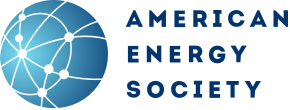A VC firm is an investment company that specifically looks for promising private companies and invests in them with the expectation of a "liquidity event." A liquidity event might take the form of the investee selling stock in an initial public offering (IPO), selling the company to a strategic investor (a corporation investing in a start-up to access its technology), or creating an opportunity for the VC to sell their shares to another, later-stage VC. Venture capital investing generally specialize in companies at certain stages of commercial development; some VCs focus on providing early-stage seed capital investments, others focus on providing investments after the company has already realized some commercial validation or success.
The exceptional challenge is impact investing in ventures that specialize in climate change.
This article focuses on one such investment as a case study, in the form of a conversation with Carbon Engineering – the innovative firm that sequesters atmospheric carbon dioxide using “Direct Air Capture” technology – which raised $68 million from a consortium of investors. Specifically, this article explores a conversation with two VC's who invested in Carbon Engineering and their shared their take-aways in investing in this specialized carbon technology.
The exceptional challenge is impact investing in ventures that specialize in climate change.
This article focuses on one such investment as a case study, in the form of a conversation with Carbon Engineering – the innovative firm that sequesters atmospheric carbon dioxide using “Direct Air Capture” technology – which raised $68 million from a consortium of investors. Specifically, this article explores a conversation with two VC's who invested in Carbon Engineering and their shared their take-aways in investing in this specialized carbon technology.
Jim McDermott, founder of Rusheen Capital Management, was one of Carbon Engineering’s earliest investors. McDermott first spoke with CE’s founder, Harvard professor David Keith, years ago when Keith had little more than a good idea and some early lab bench test results. Even as a 20-year veteran of the sustainability investment business who is comfortable with very early stage companies, Carbon Engineering’s path to commercialization at that time was too far off and too uncertain. Undeterred, Keith ended up winning pre-VC seed money from two people who could afford to fund a few years of experimentation and potential losses: Bill Gates, Microsoft’s co-founder, and Murray Edwards, billionaire founder of several energy companies, including oil sands firm Canadian Natural Resources.
After Keith had worked on building out his idea at the Carbon Engineering pilot plant in Squamish British Columbia, McDermott saw that CE’s technology had a viable pathway to profitability. Then and only then did McDermott place his and his clients’ capital at risk. When asked about his motivation for investing in CE, McDermott’s reply was telling. “All the money I’ve ever made is from seeing things that must happen and figuring out what I can do to help entrepreneurs be prepared for when the inevitable becomes reality. In the last few years, the investment community has finally started taking climate change seriously, but the research showing that it physically must occur has been clear for years. We have reached a tipping point where the investing community now realizes that civilization needs these machines to pull carbon dioxide directly out of the air. As the world comes to understand direct air capture is not science fiction, but something that is here and now, I'm confident investors will beat a path to Carbon Engineering's door.”
McDermott made clear, though, that the key to early-stage investing is not just being able to spot the trend – many people can do that. At the end of the day, it's all about the team. A bad team working on a good idea will fizzle just as surely as a good team working on a bad idea. Seeing the people involved in Carbon Engineering convinced McDermott he had found the right team to create the next Google of climate change infrastructure. When asked what similarities he saw between Google and Carbon Engineering, McDermott replied, "Just like a search engine is the first step to refining information – a necessary function for anyone using the internet – CE's direct air capture technology is the first necessary precursor for anyone wanting to turn atmospheric carbon in to useful products."
After Keith had worked on building out his idea at the Carbon Engineering pilot plant in Squamish British Columbia, McDermott saw that CE’s technology had a viable pathway to profitability. Then and only then did McDermott place his and his clients’ capital at risk. When asked about his motivation for investing in CE, McDermott’s reply was telling. “All the money I’ve ever made is from seeing things that must happen and figuring out what I can do to help entrepreneurs be prepared for when the inevitable becomes reality. In the last few years, the investment community has finally started taking climate change seriously, but the research showing that it physically must occur has been clear for years. We have reached a tipping point where the investing community now realizes that civilization needs these machines to pull carbon dioxide directly out of the air. As the world comes to understand direct air capture is not science fiction, but something that is here and now, I'm confident investors will beat a path to Carbon Engineering's door.”
McDermott made clear, though, that the key to early-stage investing is not just being able to spot the trend – many people can do that. At the end of the day, it's all about the team. A bad team working on a good idea will fizzle just as surely as a good team working on a bad idea. Seeing the people involved in Carbon Engineering convinced McDermott he had found the right team to create the next Google of climate change infrastructure. When asked what similarities he saw between Google and Carbon Engineering, McDermott replied, "Just like a search engine is the first step to refining information – a necessary function for anyone using the internet – CE's direct air capture technology is the first necessary precursor for anyone wanting to turn atmospheric carbon in to useful products."
Artist's conception of a Carbon Engineering direct air capture facility
The other VC investor, who asked to not be named, specializes in seed and early-stage investments, mainly in software or other "capital-lite" businesses. Carbon Engineering, which was founded in 2009, seemed a little more mature than what the VC’s firm usually invested in. When asked about this, his reply echoed that of McDermott, implying that an investment in CE in 2009 would have had too high of a commercialization risk. When pressed on that point, he replied that he thought CE had "de-risked" its technology enough that it was on a secure path to scale up its revenues. At this point in its development "It is closer to a typical seed bet for us…"
|
This comment was striking, since usually seed investors in software firms have an expectation that the company will begin to generate significant revenue growth within the next 1-3 years. Sure enough, a few weeks after this comment, Occidental Petroleum announced that it had signed a contract with Carbon Engineering to build a carbon capture facility in the Permian Basin of Texas, to supply its field with carbon dioxide for Enhanced Oil Recovery. The VC investor was right – when Carbon Engineering raised money earlier in the year, it was on the cusp of scaling up its revenues.
|
“All the money I’ve ever made is from seeing things that must happen and figuring out what I can do to help entrepreneurs be prepared for when the inevitable becomes reality.”
|
Another notable point of this venture capitalist's investment is that CE’s business is quite capital-intensive. In other words, CE is building and installing large and expensive equipment, having to spend a lot of money in the process. As mentioned before, most of the VC firm’s other investments tend to be in software firms or other "capital-lite" businesses – which need only small amounts of capital to begin to gain commercial traction. When asked about this, the VC explained that while his firm had mainly invested in capital-lite firms, in general, they look for an extremely strong and differentiated product and unique or contrarian insights. Certainly, Carbon Engineering has both of those quality in spades. He also echoed McDermott’s comments about Carbon Engineering’s managers – "[They have] a great team [with] unique insights in their markets."
Both venture capitalists know what all successful lenders should know: families focused on building and maintaining intergenerational wealth in this century must start investing in a new paradigm. Intelligent investors take note.
This story is part of a three-pronged looked at investments in Carbon Energy.
Both venture capitalists know what all successful lenders should know: families focused on building and maintaining intergenerational wealth in this century must start investing in a new paradigm. Intelligent investors take note.
This story is part of a three-pronged looked at investments in Carbon Energy.



